SOSTAC® Associate

By the end of this course you will:
Know how to build an outline marketing plan. Be confident about knowing what needs to go into a plan; See how it all fits together with an emphasis on the foundation of any good plan – the Situation Analysis*.
*Part 1: Situation Analysis includes Customer Analysis (ideal customers, segments, loyalty, perceptions, how they buy and are influenced); Competitor Analysis (direct and indirect competitors; 5 competitive forces; competitive strategies; distinctive competitive advantage); Company Analysis (gap analysis; matrices include Ansoff Matrix; Boston Matrix; GE Attractiveness Matrix) and Market Trends (uncontrollable external variables that affect your market).
Part 2: Objectives (where are we going?); Strategy (how do we get there?); Tactics (the details of strategy – the marketing mix); Actions (how we ensure excellent execution of the tactics – internal marketing; Control (how do we know wea re getting there – metrics we measure). See Full Syllabus below.
LEARNING TIME: 10 hours – 15 hours
ASSESSMENT: 1 hour multiple choice (x 30 questions), open book (bring your notes and manual).
PART 1 SITUATION ANALYSIS (where are we now?)
Customers Analysis: Who is Your Ideal Customer? Who Are Your Customers (Segments)?; Are Your Customers Loyal? Are They Happy? How Do They See You? How Do They Buy? How Often Do They Buy (Life-Time Value)? How Are They Influenced – Who are the Key Opinion Formers?
Competitor Analysis: Who are your Competitors? Porter’s 5 Competitive Forces; Michael Porter’s Competitive Strategies; Other Sources Of Competitive Advantage; Relative Competitive Position
Your Strengths and Weaknesses? Your Competitive Advantage; Your “Distinctive Competitive Advantage” (DCA).
Company Analysis: Performance/Results; Gap Analysis; Product Portfolio Analysis: Ansoff Matrix; Boston Matrix; GE Market Attractiveness Matrix
Market Trends – the external trends that affect your business.
PART 2 OBJECTIVES, STRATEGY, TACTICS, ACTION & CONTROL
Objectives (where are we going?): Mission; Vision; Marketing Objectives; MarComms Objectives
Strategy (how do we get there?)
Tactics (the details of strategy – Marketing Mix): Product; Price; Place (Distribution)
Promotion (Communication); Physical Evidence; People; Process; Physical Evidence
Actions (how we ensure excellent execution of the tactics?)
Control (how do we know we are getting there?): Your Sales Forecast; Budget; Contingency Planning; Embrace Change
Video Introduction

Video Tutorials
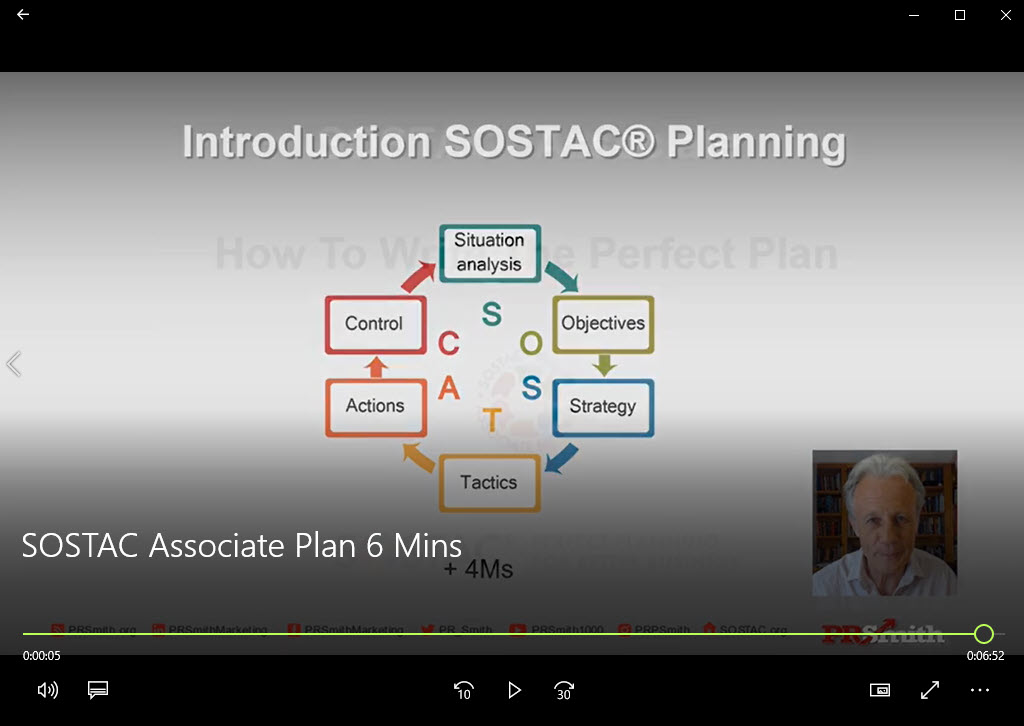
Manual
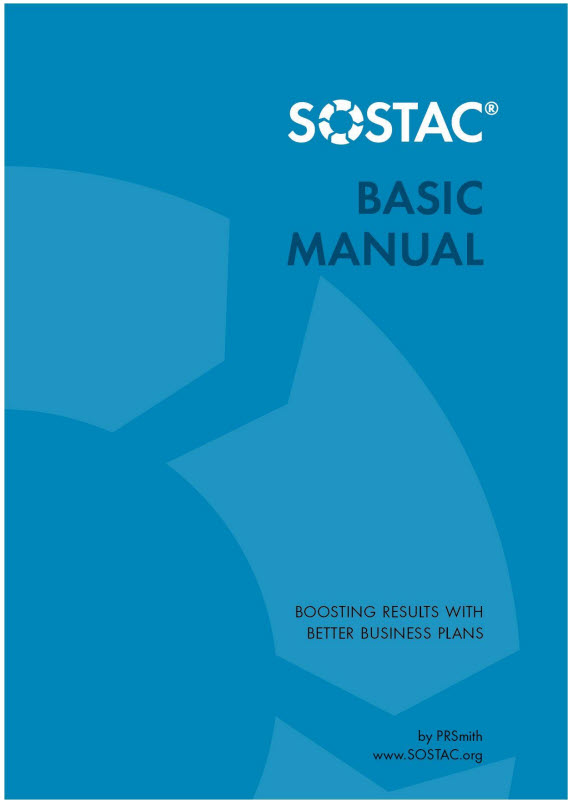
Quizzes

Clubhouse
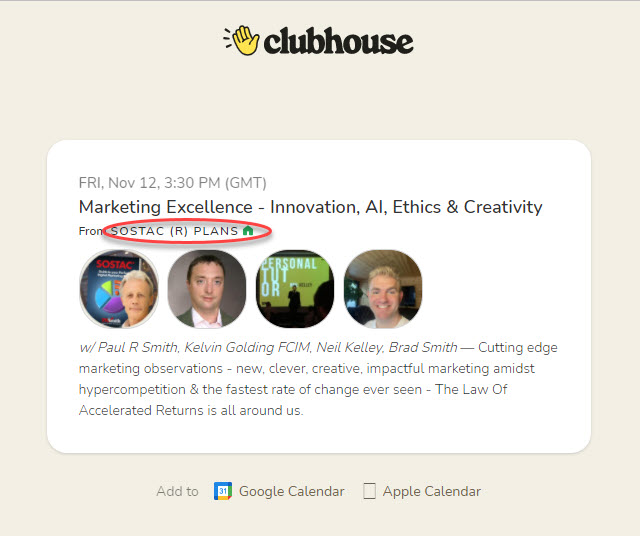
Weekly Live Chat 30 mins every Fri
30 min chat in the SOSTAC® Club in the Clubhouse App
3.30pm GMT/BST
Take-Away Thoughts
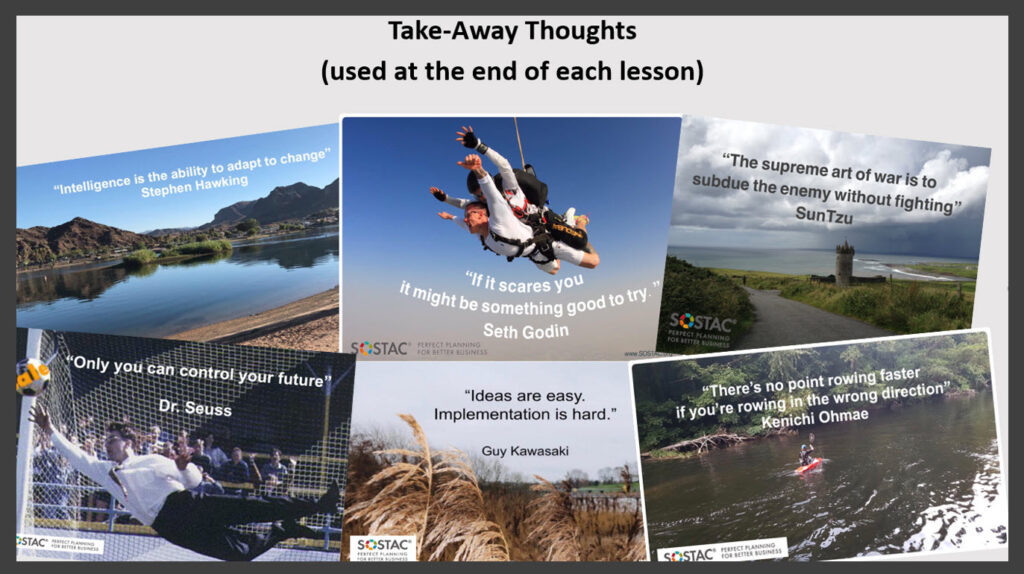
Online Assessment
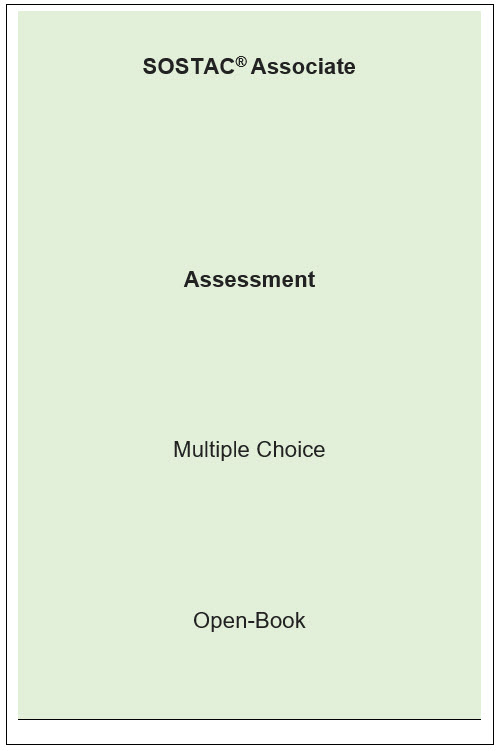
Certificate
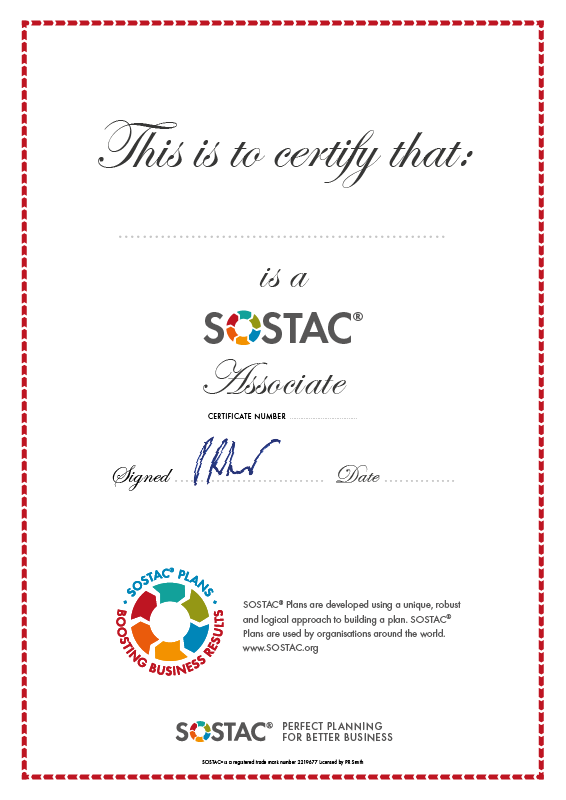
Badge
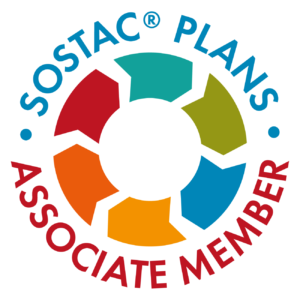
Continuing Professional Development
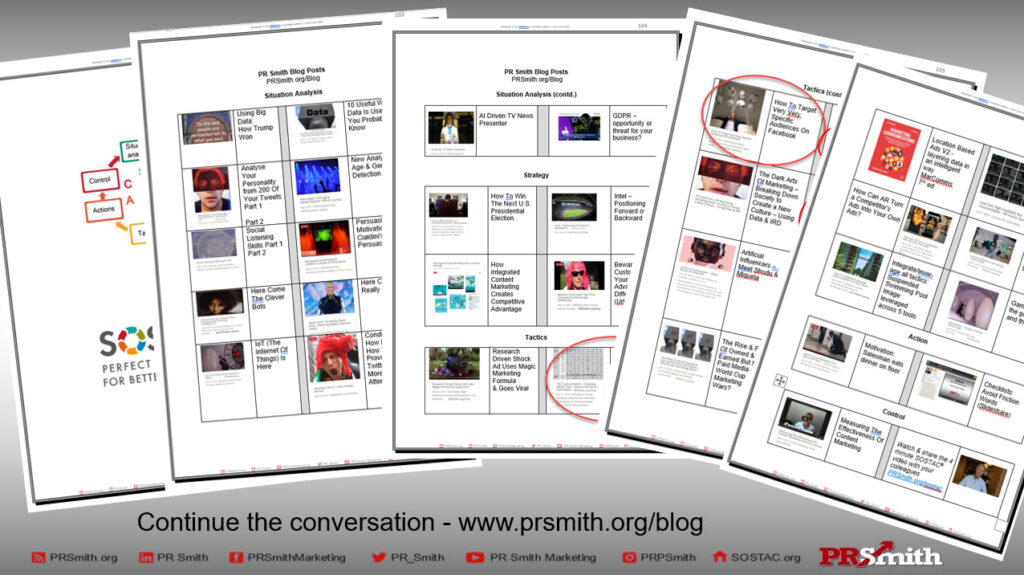
PR Smith Blog Posts and Conversations
Continuing Professional Development

30 min Clubhouse Chat in the SOSTAC® Club
every Fri 3.30pm GMT/BST
None – open to anyone (e.g. young/junior-level executives) but must be over the age of 18.
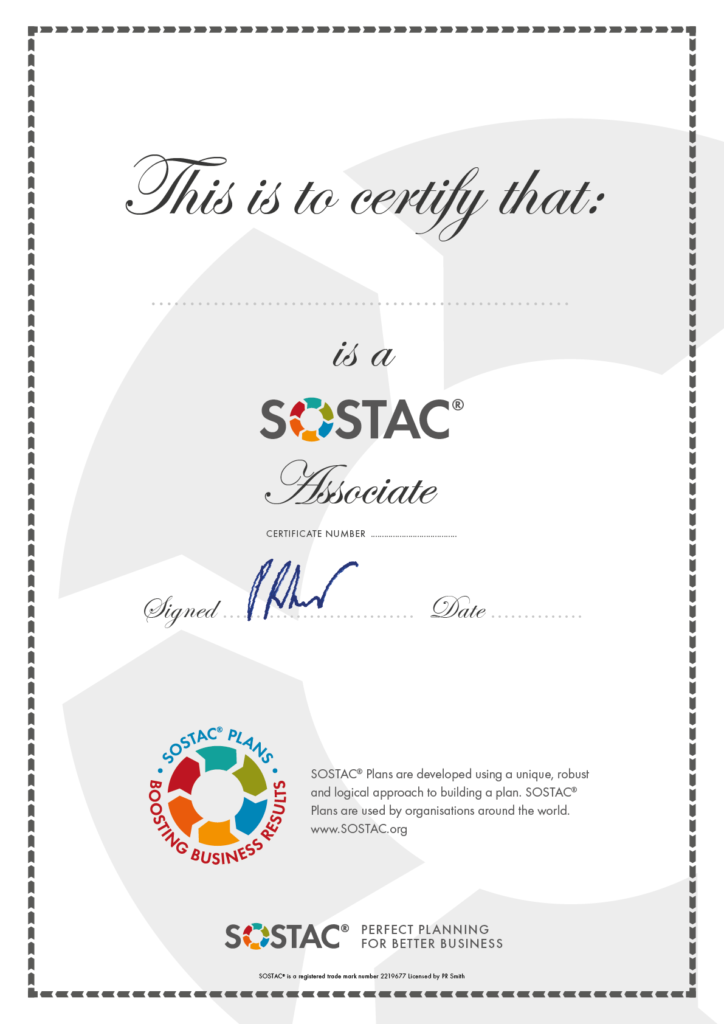
- Learn how to write an outline marketing plan
- See how it all fits together
- Get an SOSTAC® Associate Certificate
- Become a SOSTAC® Associate
- Resources
Registration Fee: £125 (includes one free re-sit of the test if required). For UK residents, the standard 20% VAT applies i.e. UK Fee £150. Non-UK fee is £125.
1-hour, open book, online, MCQ test (60% score required to pass and become an associate). Take the 60-minute SOSTAC® Associate online test after you have read the manual or attended a workshop or read either of the books. You have 90 days from date of registration to take the assessment. After taking the online assessment you:
- get an instant result
- give instant feedback
- get your instant certificate
After passing the exam, you will be able to write outline plans with confidence. SOSTAC® Associate can also register to take the elite SOSTAC® Certified Planner course and test. The SOSTAC® Certified Planner is accredited by the UK CPD Standards Office.
• Online Test is ‘always on’ and ready as soon as you are ready
• The test is ONE (1) hour in duration.
• You must have a stable internet connection to take any SOSTAC® tests.
• If your browser displays a ‘back’ button DO NOT EVER click the ‘back button as this will terminate your test.
• Do not close your browser once you have started the online test (as this will end the test).
• If you fail the test, you have 48 hours to take a free re-sit.
• You must score a minimum of 60% to pass.
• You must take the test within 90 days of registration (otherwise you incur another registration fee).
